Pros
-
Incredible contrast and color
-
HDMI 2.1-specified features
-
Zippy, flexible smart platform
The Sony A90J will undoubtedly be a contender for the best TV of the year.
While it isn’t a massive leap forward from Sony’s last generation of OLED TVs, there are minor-to-moderate improvements all over the A90J, from its performance to its smart platform. Gamers will be happy to learn that Sony has finally embraced HDMI 2.1, and when it comes to overall picture quality, very few TVs are in the same realm.
There’s no way around the A90J’s steep cost—not many consumer-facing TVs are priced this high. But for anyone looking to build an advanced home theater setup, the A90J has the performance chops and the hardware to be the cornerstone. It’s truly a feast for the senses.
About the Sony A90J Master Series OLED
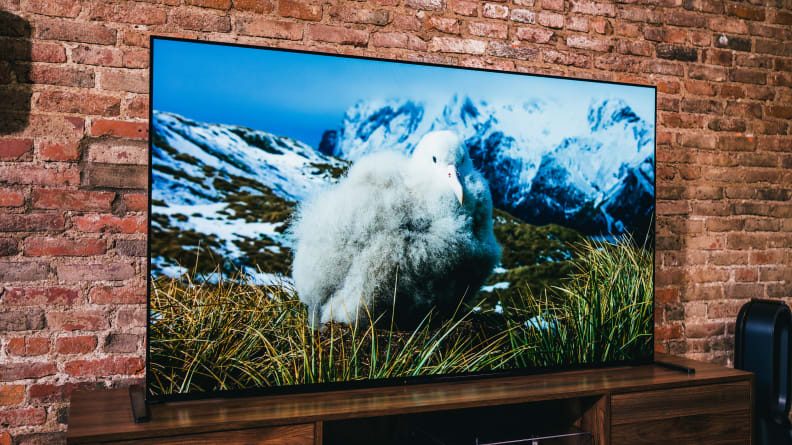
Credit: Reviewed / Jackson Ruckar
The Sony A90J OLED TV is available in 55-, 65-, and 83-inch size variants.
The Sony A90J is available in three sizes: 55 inches, 65 inches, and a room-dominating 83 inches. Our review unit is a 65-inch A90J on loan from Sony. As of this moment, the price of the 83-inch A90J is not yet available, but if the 55- and 65-inch variants are any indication, you can expect to pay a pretty penny for the privilege of owning it.
We’ll update this review when more information comes to light, but for now, here’s how the rest of the series shakes out:
- 55-inch (Sony XBR-55A90J), MSRP $2,999.99
- 65-inch (Sony XBR-65A90J), MSRP $3,999.99
- 83-inch (Sony XBR-83A90J), price not yet announced
Different sizes of TVs in a series tend to perform very similarly to one another, and this is especially true for OLED TVs, which, due to their self-emissive nature, don’t rely on varying backlight components that might differ depending on panel size.
In fact, other than screen size, the only difference between the three sizes of the Sony A90J is that the 83-inch version offers three ways to configure the TV’s stand, whereas the 55- and 65-inch versions offer two configurations. I’ll touch on this aspect of the TV’s design at length further into the review.
Here's a rundown of key specifications shared by all sizes in the A90J series:
- Resolution: 4K (3,840 x 2,160)
- Display type: OLED
- HDR support: HDR10, HLG, Dolby Vision
- Dolby Atmos: Yes
- eARC support: Yes
- Native refresh rate: 120 Hz
- Smart platform: Yes (Google TV)
- Color: DCI-P3/10-bit color space
- Processor: Cognitive Processor XR
- Variable Refresh Rate (VRR): Yes
- Auto Low Latency Mode (ALLM): Yes
- Other features: AirPlay support, Google Assistant, and Chromecast integration
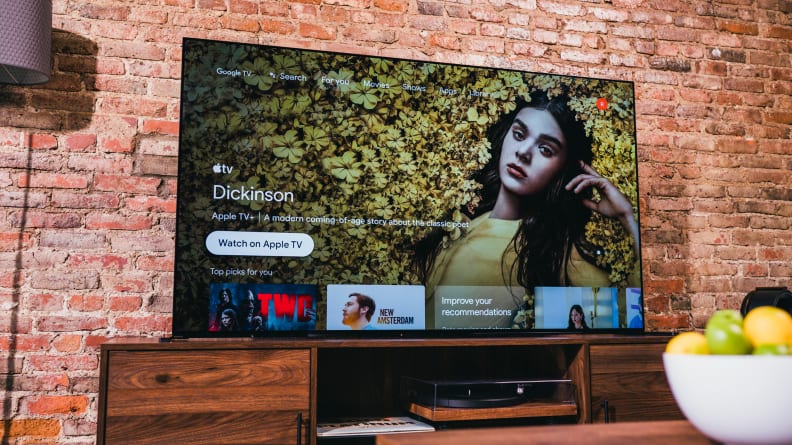
Credit: Reviewed / Jackson Ruckar
Google TV is a much-needed improvement over Android TV—it's faster, easier to navigate, and offers a wide selection of content.
This year, Sony’s Bravia TV lineup is making the switch from Android TV to Google TV (more on that later). Additionally, the Sony A90J also offers support for Google Assistant and Chromecast, the latter of which allows users to “cast” content to the A90J from a mobile device.
The A90J’s high-class hardware allows for such features as Variable Refresh Rate (VRR) and Auto Low Latency Mode (ALLM), and it’s capable of displaying 4K content at 120 FPS, provided that one of the TV’s two HDMI 2.1 inputs is in use.
Rounding out the package are several A/V goodies worth mentioning: two picture modes calibrated specifically for Netflix original content and IMAX-enhanced content, as well as an audio feature dubbed “XR Sound Position,” which uses the TV’s surface speakers to match audio to its visual source within the onscreen action. The A90J also features an ambient light sensor and a color sensor which, when enabled, adjust the picture's brightness and color temperature based on the lighting conditions of the TV’s environment.
Performance Data
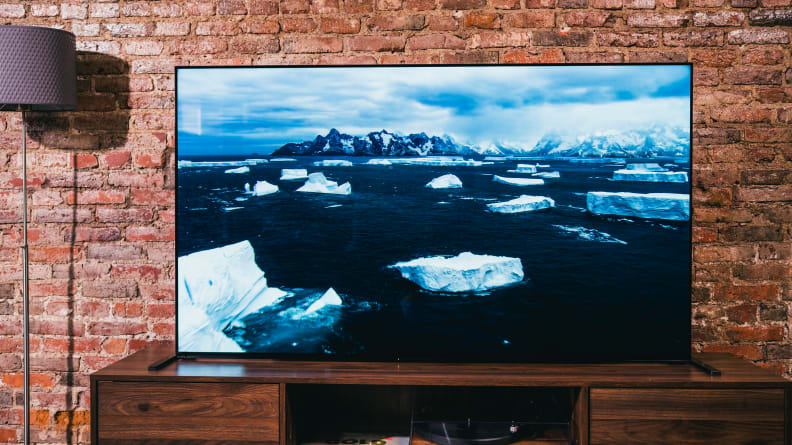
Credit: Reviewed / Jackson Ruckar
We used Sony's "Custom" picture mode for all of our SDR and HDR tests.
Before testing each TV, we make sure the panel is on and receiving a continuous signal for at least 24 hours, allowing the pixels plenty of time to warm up. Our 65-inch A90J received this standard warm-up time before any readings were taken.
For both SDR and HDR tests, we used Sony's "Custom" picture setting. We’ve chosen this picture mode because of its accuracy (Sony reports that its "Custom" picture setting is the best-calibrated mode), but results may vary depending on which picture mode is enabled. We also disabled the A90J’s ambient light sensor for every test we conducted.
We use a standard ANSI checkerboard pattern for most of our basic contrast tests—including the ones reported below—but we also use white and black windows ranging from 2% to 90% to test how well the contrast holds up while displaying varying degrees of brightness.
All of our tests are created with a QuantumData 780A signal generator and tabulated via Calman Ultimate. I'll expand on our test results throughout the review, but for now, here are some key takeaways:
• HDR contrast (brightness/black level): 279.1 nits/0.001 nits (ANSI checkerboard)
• SDR contrast (brightness/black level): 214.6 nits/0.001 nits (ANSI checkerboard)
• HDR peak brightness: 723.3 nits (20% white window)
• HDR color gamut coverage: 98% (DCI-P3/10-bit)
• SDR color gamut coverage: 100% (Rec.709)
In addition to our lab tests, a critical aspect of our testing process is to watch content and to simply “hang out” with the TV for a while. Due to COVID restrictions, the process typically takes place over several days with multiple people assessing the TV.
Connectivity
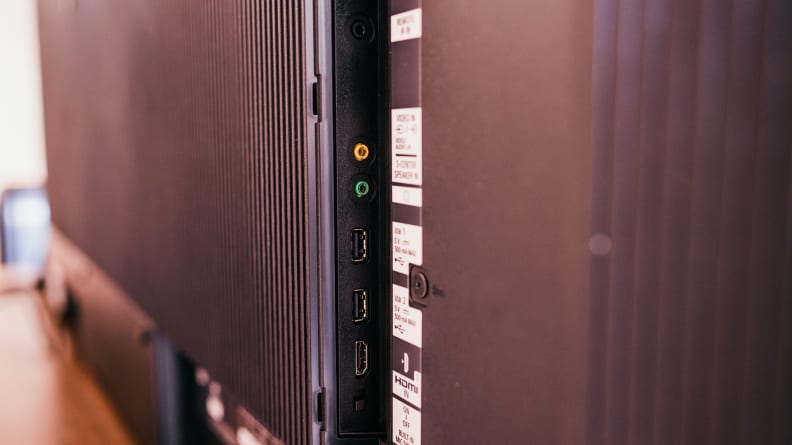
Credit: Reviewed / Jackson Ruckar
The A90J features four HDMI ports, two of which support HDMI 2.1-related features like 4K resolution at 120 Hz.
Like most top-shelf TVs in 2021, the Sony A90J is equipped with some of the best hardware currently available for A/V enthusiasts and gamers alike. You’ll find the following inputs in cutouts on the back of the A90J’s panel:
• 4x HDMI (2x HDMI 2.1, 1x eARC)
• 3x USB (1x USB 3.0)
• Composite input
• LAN ethernet port, RF input, optical (digital) audio output, 3.5mm audio output
It’s worth underlining that, of the four HDMI ports, only two of them support HDMI 2.1-specified features like VRR, ALLM, and 4K resolution at 120 FPS. If you’re hoping to take advantage of these features, be sure that your devices are plugged into the appropriate port.
What We Like
Excellent contrast and color
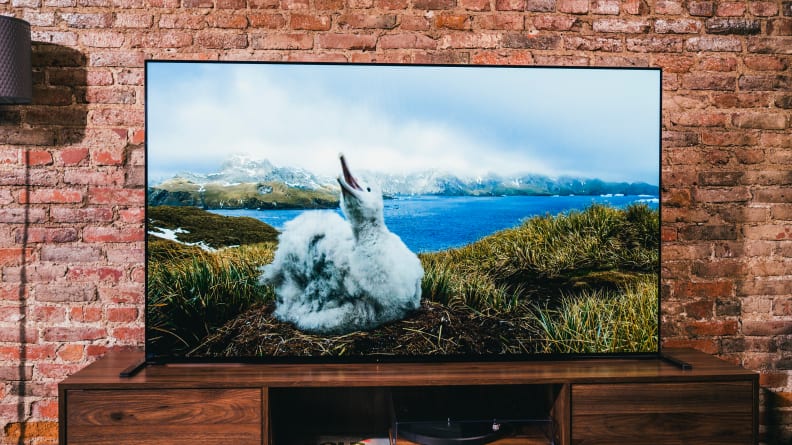
Credit: Reviewed / Jackson Ruckar
Perfect black levels are just one of the many benefits of OLED display technology.
Of the myriad benefits of OLED technology, its greatest advantage by far is its ability to create perfect black levels. Since these impressive displays don’t rely on a backlight, each individual pixel is capable of turning on and off independently, which is why TVs like the A90J are capable of such stunning contrast.
Deep, dark black levels are just the tip of the iceberg, however; an OLED TV’s self-emissive nature also ensures that light and dark picture elements are tightly controlled, so the A90J is free of light bloom. Shadow tones are properly gradated and there’s almost no light bleeding to speak of when bright and dark picture elements are sharing the frame.
And although we’re slightly disappointed in the A90J’s somewhat-limited brightness, it’s nevertheless one of the brightest OLED TVs we’ve ever tested, climbing as high as 700 to 800 nits in its most accurate picture mode. While that sort of brightness falls well below the 1,000 to 1,300 nits we regularly measure on high-end LCD/LED TVs, as of now it nevertheless represents the upper limit of what we’ve come to expect from OLED TVs.
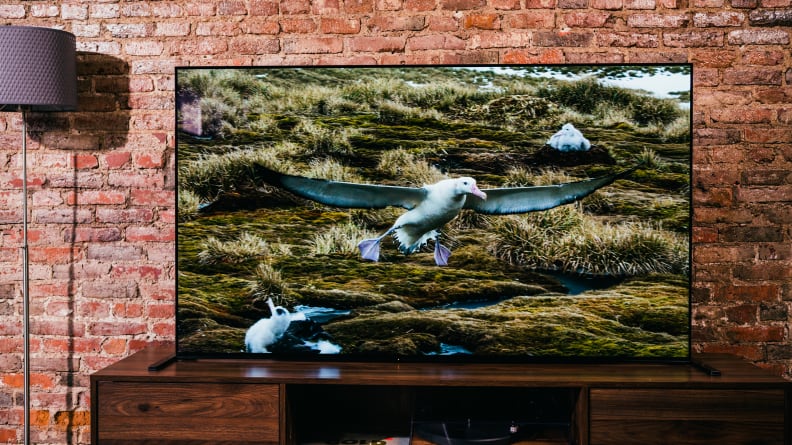
Credit: Reviewed / Jackson Ruckar
The A90J is a heck of a good HDR TV thanks to its accurate, voluminous color reproduction and superb contrast.
Almost as impressive as the A90J’s contrast is its color reproduction, which is about as accurate as you can get these days. According to our lab tests, the A90J covers about 98% of the extra-wide HDR color gamut (DCI-P3) and 100% of the standard Rec.709 color space. Its color temperature errs on the cooler side, but not enough to distract even the keenest of eyes.
So long as the A90J is set to its “Custom” picture mode, its out-of-the-box performance is one of the best we’ve ever seen. If you’re a stickler for accurate colors but you’ve got no interest in having your TV calibrated professionally, the A90J is a fantastic solution.
Unique, adjustable design that looks great

Credit: Reviewed / Jackson Ruckar
The adjustable feet flank the A90J's impressively thin panel and give the illusion that the TV is standing up like an easel.
The A90J is one of those rare TVs whose design is as interesting as it is functional. If you’re not planning on mounting your A90J, you’ll have the choice between at least two stand positions. The standard setup places the TV’s feet just outside of the panel’s corners, which makes it appear as though the A90J is standing up on its own, its bottom bezel resting almost directly on whatever surface it sits on.

Credit: Reviewed / Jackson Ruckar
Each adjustable foot—seen here in its standard position—features a cable management compartment.
If you use a soundbar, the standard position might not be the best choice, since it keeps the A90J as close to the TV’s surface as possible, which means a soundbar might get in the way of the picture. The TV’s secondary position simply rotates the TV’s feet so that they’re elevating the panel, which leaves plenty of room for tabletop devices like soundbars or streaming boxes.
The 83-inch version of the A90J features both of these configurations plus a third option which brings the TV’s feet closer to the center of the panel. Without this option, folks who invest in the 83-inch version of the A90J probably wouldn’t be able to find a wide-enough surface to accommodate its massive panel. Regardless of which configuration you opt for, the A90J’s feet and panel offer cable management compartments that do a fine job of hiding your devices’ wires if you just can’t stand the sight of them.
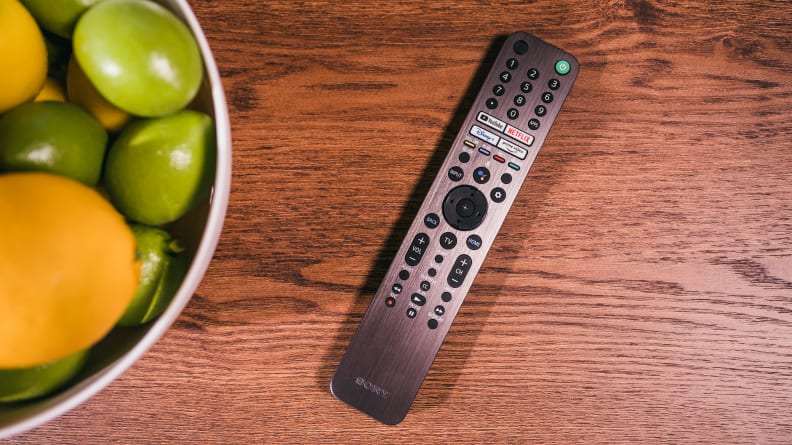
Credit: Reviewed / Jackson Ruckar
Sony's new remote control is narrower than it was in years past and also features a backlight for easier dark room use.
Being an OLED TV, the A90J features a razor-thin panel that’s far narrower than any you’ll find on a traditional, backlit LCD/LED TV. Other than the chassis—which is just thick enough to accommodate the TV’s internals—the A90J is about as thin as TVs come these days.
Lastly, I’d be remiss if I didn’t give a shout-out to Sony’s new remote control. In addition to looking and feeling better than any Sony clicker in recent memory, it also offers a backlight so users have an easier time using it in the dark.
Future-facing features for gamers and A/V geeks
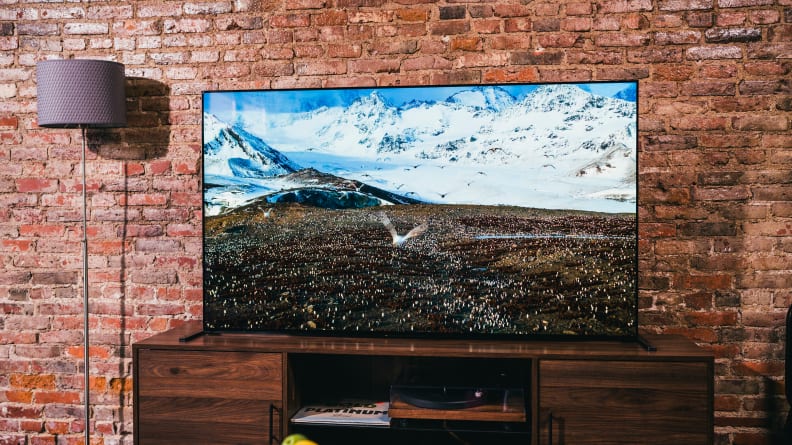
Credit: Reviewed / Jackson Ruckar
Included with the A90J: eARC compatibility, Dolby Vision support, a native 120 Hz refresh rate, and gaming-centric, HDMI 2.1-specified features
We were reasonably disappointed in last year’s Sony A8H OLED TV for its lack of HDMI 2.1-specified features, but this year, Sony is wisely positioning most of its high-end TVs for the future by strapping them with features that will keep them fresh for years to come.
As part of Sony’s Master Series, the A90J is one of the TVs enjoying an upgrade this year. Two of the TV’s HDMI inputs support 4K content at 120 Hz as well as Auto Low Latency Mode (ALLM) and Variable Refresh Rate (VRR), two gaming-related features that optimize the A90J for next-generation gaming.
Two of the TV’s HDMI inputs support HDMI 2.1-specified features.
Like most of Sony’s premium offerings in 2020, the 2021 A90J offers eARC compatibility for high-resolution audio passthrough to Dolby Atmos-compatible sound systems as well as Dolby Vision support.
If you own (or you’re planning on owning) a PlayStation 5 or Xbox Series X, the Sony A90J will set you up for years of compatibility with the still-nascent advancements in video game technology.
Flexibility for audiophiles
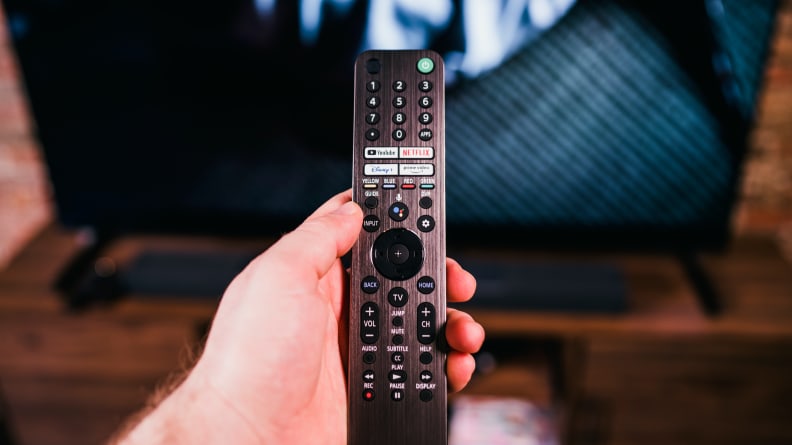
Credit: Reviewed / Jackson Ruckar
Sony's Acoustic Surface Audio system is hiding a few tricks up its sleeve, including real-time ambient audio optimization and a center speaker mode.
In addition to its support for the Dolby Atmos audio format, the A90J is also hiding some interesting audio-related tricks up its sleeve. Its impressive internal speaker system is screen-based, with dual-coil actuators and subwoofers hidden right in the panel. Dubbed “Acoustic Surface Audio+,” the system is capable of spatially positioning the audio based on the location of the subjects in the frame.
Another neat feature is the A90J’s ability to use the TV’s internal speakers as the center channel in a surround sound system—something its younger sibling, the A80J OLED, can’t pull off. Under most circumstances, I’d not think much of this feature, but I can certainly see the appeal when paired with the A90J’s ability to spatially adjust audio via the display.
Google TV is a big improvement over Android TV
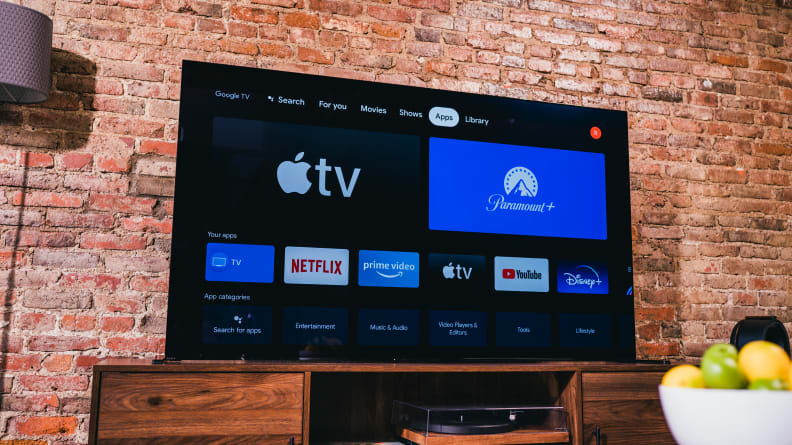
Credit: Reviewed / Jackson Ruckar
If you'd rather not jump from app to app, Google TV allows you to search for specific content across all of your available apps.
This year, every TV in Sony’s Bravia lineup is making the switch from Android TV to Google TV—the same software experience you’ll find on the new Chromecast. While we always appreciated Android TV’s wealth of content, we found its implementation within Sony’s software to be frustrating more often than not.
Fortunately, Google TV is a major step up in almost every way. Basic menu navigation is zippier than it was in the Android TV years and the user interface is much easier to digest. That said, some folks might need some time to get used to Google’s content-centric approach to organization, which prompts users to search for content across all available apps. Additional apps can be added to Google TV, but the primary means of accessing content is search-based, and these searches take all available apps into account.
In the time we’ve spent with Google TV, we haven’t noticed very many situations where it prioritizes paid content over free content. In other words, the system rarely seems as though it’s funneling users into pay-per-view options when a title is also available for free.
What We Don’t Like
Impressively bright for an OLED, but not as bright as we’d hoped
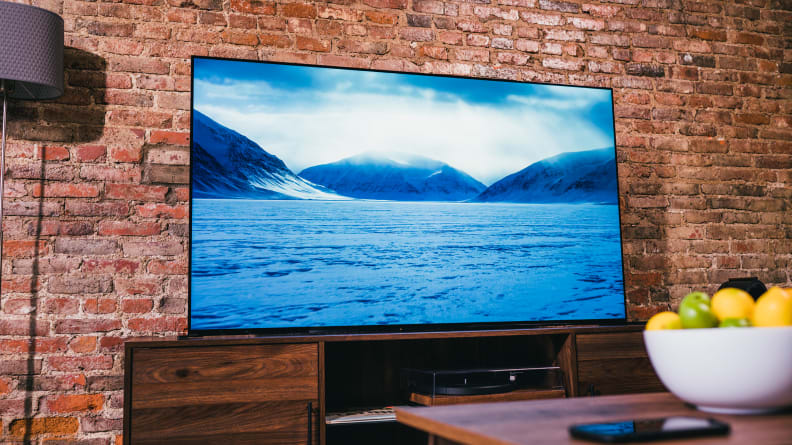
Credit: Reviewed / Jackson Ruckar
We were thrilled to discover that the A90J is one of the brightest OLEDs we've ever tested, but we're nevertheless disappointed that it isn't brighter.
Before I begin to pick some nits, I’d like to reiterate that the A90J is among the brightest OLEDs we’ve ever tested. Sony promised that this year’s Master Series OLED would see improvements in overall brightness, and this is correct—the A90J is, on average, brighter than the Sony A8H we tested last year. That said (and this is where the nitpicking comes in), we’d be lying if we said we weren’t expecting a bit more in the brightness department.
The A90J is the first Sony OLED to feature an aluminum laminate within the panel composite. The panel is intended to act as a heat sink of sorts, and Sony says that the heat dissipation improves brightness. The company’s engineers have also reportedly found a way to push WRGB sub-pixel luminance without throwing off the picture’s white balance, which they say is one of the reasons for the panel’s improved brightness.
While the A90J is technically brighter than Sony’s last round of OLEDs, it's usually only about 50 to 100 nits brighter on average, specular highlights aside. It’s certainly an achievement, just not as big of a leap as I was envisioning.
In fairness, you can’t hold it against Sony for failing to drag OLED displays into the sort of future I often daydream about, and the A90J is impressively bright for its class. It's here where I'll also reinforce that the incredible contrast of OLED panels makes them appear brighter than they actually are under normal circumstances. That said, if your living room is a bright one—or if you’d simply rather invest in a TV that packs a brighter punch—you’ll probably find a better pick outside of the OLED category altogether.
Priced at a premium
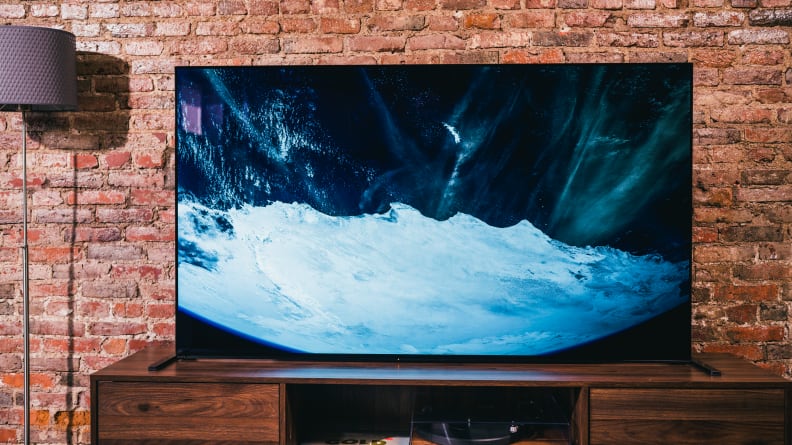
Credit: Reviewed / Jackson Ruckar
The A90J starts at around $3,000 for the 55-inch model.
Sony’s maximalist approach to its Master Series lineup ensures that those investing in a TV like the A90J are getting a suite of top-shelf hardware and future-ready features. Unfortunately, this makes for a TV whose cost is anything but budget friendly.
The series starts at around $3,000 for the 55-inch model—the smallest TV in the series. If you’re looking to lock down a 65-inch A90J, that will set you back around $4,000. To be clear, these prices are not unheard of for high-end flagship TVs like the A90J, but consider the fact that the LG CX, our pick for the Best TV from last year, starts at $1,799 for the 55-inch model.
The A90J is anything but budget friendly.
Investing in the Sony A90J means investing in one of the best TVs the industry has to offer right now, but all things considered, it’s still priced a bit higher than we expected it would be given the market. That doesn’t mean it’s not worth the cost, it just means that its closest competition has the edge in terms of pricing.
Of course, in the coming weeks and months we’ll be getting a good look at some of LG’s 2021 OLEDs, so we don’t have to wait very long to see how the A90J stacks up to its most recent fellow OLED TVs.
Should You Buy It?
Yes—if you have the means, it’s one of the best TVs of the year
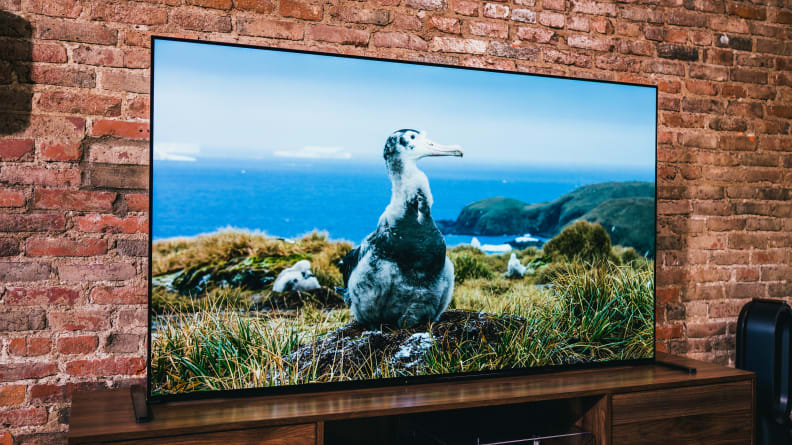
Credit: Reviewed / Jackson Ruckar
The Sony A90J is undoubtedly one of the best TVs of the year.
While it’s certainly a steep investment, the Sony A90J is one of the best TVs we’ve seen in a long while, and undoubtedly one of the best of the year. It may not be a huge leap forward, but nearly every aspect of the A90J has seen an improvement—from its smart platform right down to the physical design.
Despite not quite living up to my (apparently unrealistic) expectations for next-level OLED brightness, the A90J is nevertheless one of the brightest OLEDs we’ve ever seen, and its out-of-the-box calibration is downright surgical. Its picture quality is buoyed by an array of future-facing features that will keep gamers and cinephiles satisfied for years to come.
It’s the sum of these improvements that really makes the A90J significantly more recommendable than Sony OLEDs of years past—and what makes it such a tough rival for competing OLEDs from LG and Vizio. That said, most of its competition can be bought for less, and the A90J isn’t that much brighter than last year’s LG CX (which is otherwise every bit as good from a performance standpoint).
The A90J is significantly more recommendable than Sony OLEDs of years’ past.
If your living room gets a lot of daylight—or if you’re just hoping to invest in a stunningly bright home theater experience—I’d recommend leaving the OLED category altogether and exploring quantum dot LED TVs like the Vizio P-Series Quantum X or the Samsung Q90T, both of which get much, much brighter than any OLED.
The Sony A90J is unquestionably one of the best TVs money can buy, and if you can stomach the cost, it’s unlikely you’ll regret the investment.
Meet the testers
Michael Desjardin graduated from Emerson College after having studied media production and screenwriting. He specializes in tech for Reviewed, but also loves film criticism, weird ambient music, cooking, and food in general.
Julia is the Senior Scientist at Reviewed, which means that she oversees (and continually updates) the testing of products in Reviewed's core categories such as televisions, washing machines, refrigerators, and more. She also determines the testing methods and standards for Reviewed's "The Best Right Now" articles.
Checking our work.
We use standardized and scientific testing methods to scrutinize every product and provide you with objectively accurate results. If you’ve found different results in your own research, email us and we’ll compare notes. If it looks substantial, we’ll gladly re-test a product to try and reproduce these results. After all, peer reviews are a critical part of any scientific process.
Shoot us an emailMarch 13, 2021 at 04:59AM
https://ift.tt/3vm5vgb
Sony A90J OLED TV Review: the gauntlet has been thrown - Reviewed
https://ift.tt/2ZeUDD8
Sony



No comments:
Post a Comment